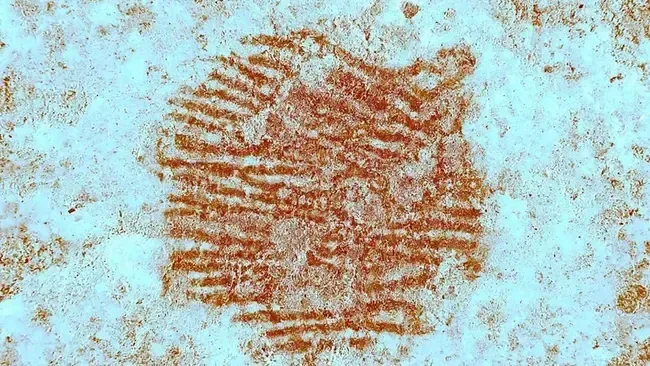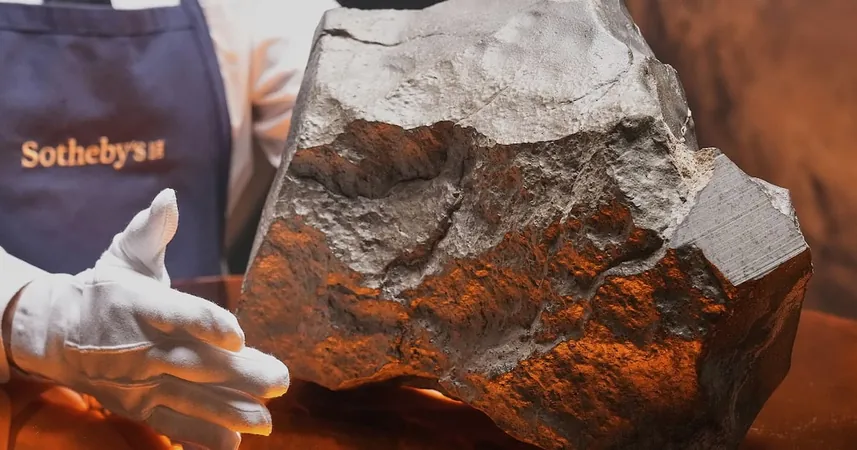
Neanderthal Fingerprint Discovery: A Glimpse into Their Artistic Minds?
2025-06-01
Author: Noah
Could Neanderthals have possessed the capacity for creativity, imagination, and even art? A groundbreaking archaeological discovery in Spain might just shed light on this intriguing question.
A Revolutionary Find in Spain
During a press conference in Segovia, researchers unveiled what is heralded as the oldest complete human fingerprint ever found, attributed to a young male Neanderthal. This remarkable imprint, discovered in July 2022 at the San Lázaro rock shelter, was made using red pigment.
Meet "Perico": The Artist's Canvas
The fingerprint was embedded on a granite pebble affectionately named "Perico." This stone is not only notable for its ochre markings— a clay-based pigment historically utilized by Neanderthals— but also for natural grooves that strikingly resemble a human face, a phenomenon called pareidolia.
A Remarkable Revelation
Geologist Andrés Díaz-Herrero, part of the research team, described the find with enthusiasm: "Where the nose should have been, a perfect fingerprint had been imprinted. It was amazing!" Dating back approximately 43,000 years, the stone was analyzed through advanced techniques including scanning electron microscopy and multispectral analysis to confirm the pigment was indeed ochre. This substance was previously known to be used by Neanderthals for decorative purposes.
Insights into Neanderthal Cognitive Abilities
Forensic analysis led by Spain’s national police identified the fingerprint as belonging to the right index finger of a young male, aged between 18 and 25. This evidence, along with the careful selection of the stone and intentional use of pigment, suggests that Neanderthals may have engaged in symbolic thinking and complex cognitive processes. Researchers argued that three key cognitive activities are essential for artistic creation: imagining an image, deliberate communication, and attributing meaning.
Skepticism Among Experts
However, not every expert is convinced by the findings. Roberto Ontañón, director of the Museum of Prehistory and Archaeology of Cantabria, lauded the study’s rigor but questioned its interpretations, asserting, "The symbolic value seems implausible or nearly impossible." He speculated that the patterns could be coincidental rather than the product of an artist's intent.
Archaeologist Javier Baena from the Autonomous University of Madrid echoed this caution. He highlighted the risks of framing the discovery as being uniquely significant, suggesting it deviates from a strictly scientific perspective.
A New Perspective on Neanderthals
Despite the differing opinions, this astonishing discovery contributes to an evolving understanding of Neanderthals as complex beings, suggesting that they may have engaged in more than mere survival—they could have conceived, symbolized, and even created.
The Legacy of "Perico"
The pebble, named "Perico" in honor of Spanish cyclist Pedro Delgado, winner of the 1988 Tour de France, continues to inspire curiosity and debate in the study of our ancient relatives.









 Brasil (PT)
Brasil (PT)
 Canada (EN)
Canada (EN)
 Chile (ES)
Chile (ES)
 Česko (CS)
Česko (CS)
 대한민국 (KO)
대한민국 (KO)
 España (ES)
España (ES)
 France (FR)
France (FR)
 Hong Kong (EN)
Hong Kong (EN)
 Italia (IT)
Italia (IT)
 日本 (JA)
日本 (JA)
 Magyarország (HU)
Magyarország (HU)
 Norge (NO)
Norge (NO)
 Polska (PL)
Polska (PL)
 Schweiz (DE)
Schweiz (DE)
 Singapore (EN)
Singapore (EN)
 Sverige (SV)
Sverige (SV)
 Suomi (FI)
Suomi (FI)
 Türkiye (TR)
Türkiye (TR)
 الإمارات العربية المتحدة (AR)
الإمارات العربية المتحدة (AR)